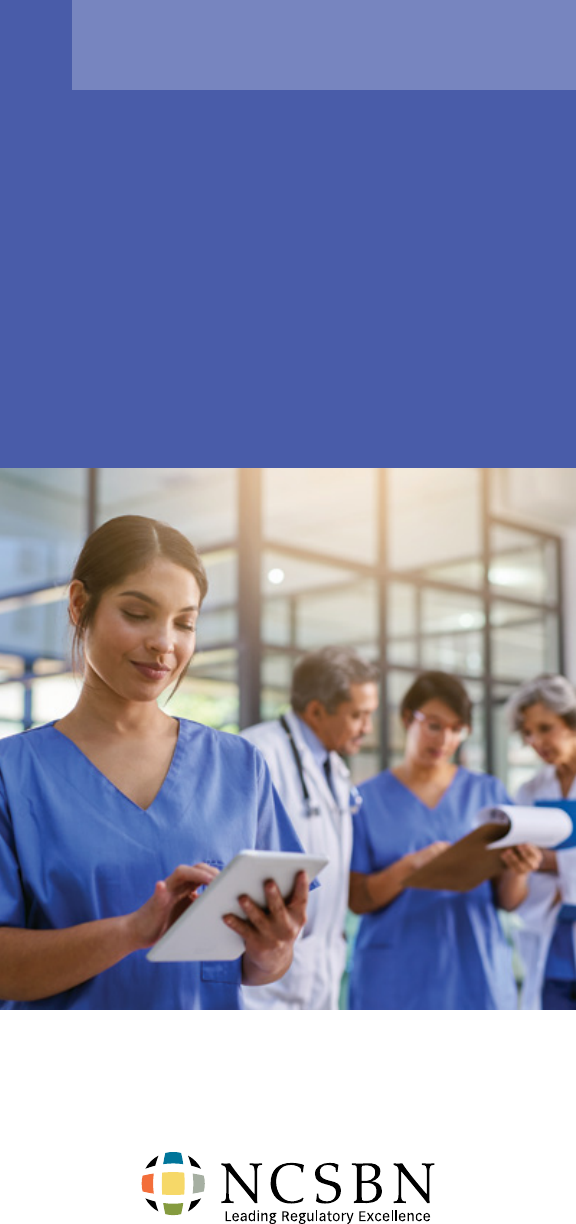
A Nurse’s Guide to the
Use of
Social Media
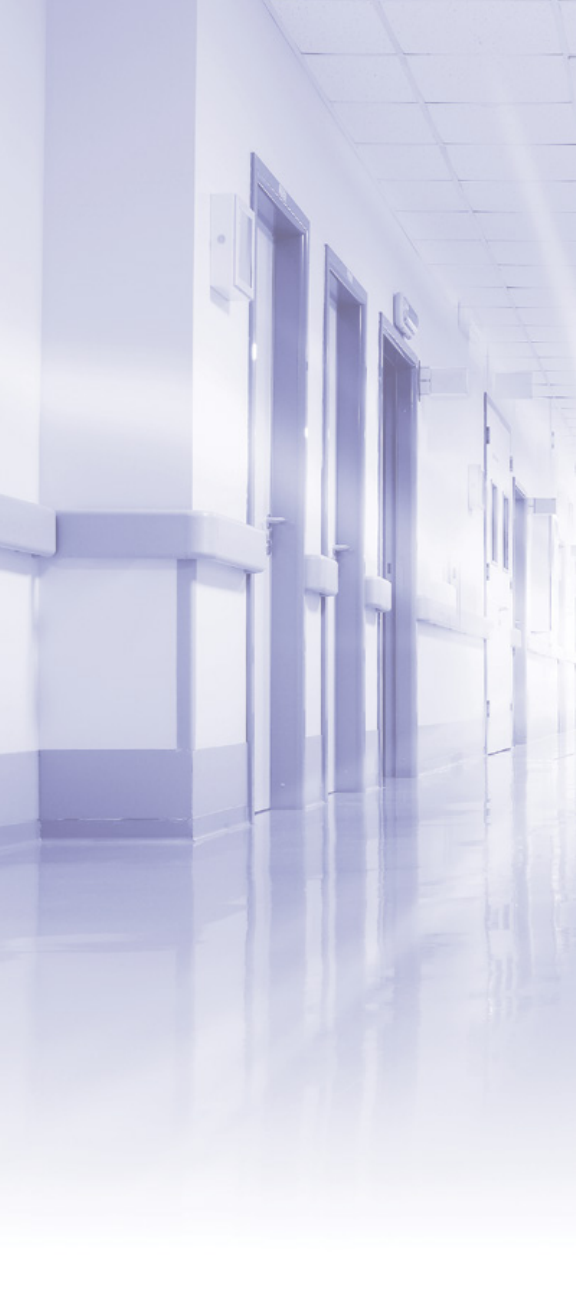
A nurse must
understand and apply
these guidelines for the
use of social media.

T
he use of social media and other
electronic communication is expanding
exponentially as the number of social media
outlets, platforms and applications available
continue to increase. Individuals use blogs,
social networking sites, video sites, online
chat rooms and forums to communicate both
personally and professionally with others.
Social media is an exciting and valuable tool
when used wisely. The very nature of this
medium, however, can pose a risk as it offers
instantaneous posting opportunities that allow
little time for reflective thought and carries
the added burden that what is posted on the
Internet is discoverable by a court of law even
when it is long deleted.
Nurses are welcome to use social media in
their personal lives. This may include having
a Facebook page, a Twitter feed or blogging
on various websites. Nurses can positively
use electronic media to share workplace
experiences, particularly those events that
are challenging or emotionally charged, but
it is imperative not to mention patients by
name or provide any information or details that
could possibly identify them in order to protect
patients’ right to privacy.
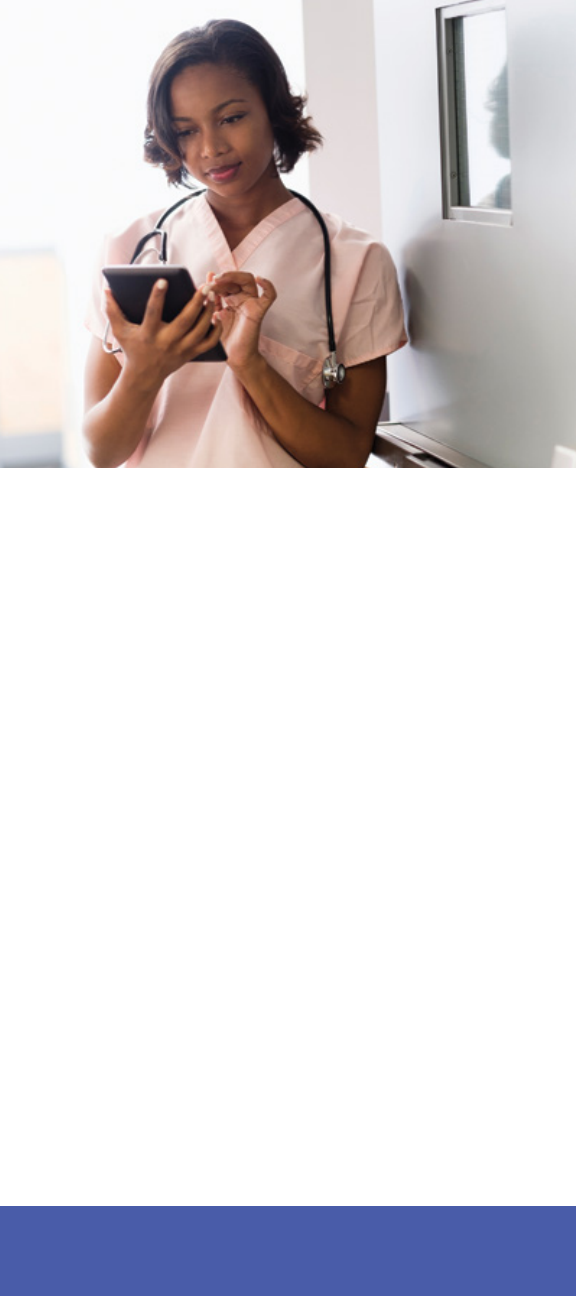
4
SOCIAL MEDIA IN THE WORKPLACE
Social media can benefit health care in a variety of ways,
including fostering professional connections, promoting
timely communication with patients and family members,
and educating and informing consumers and health care
professionals. Social media provides nurses with a way to
express their feelings, and reflect or seek support from
friends, colleagues, peers or virtually anyone on the Internet.
Journaling and reflective practice are recognized as effective
tools in nursing practice, and the Internet provides an
alternative media for nurses to engage in these helpful
activities. Without a sense of caution, however, these
understandable needs and potential benefits may result in
the nurse disclosing too much information, and violating
patient privacy and confidentiality.
Health care organizations that utilize electronic and social
media typically have policies governing employee use of
such media in the workplace. Components of these policies
often address personal use of employer computers and
equipment, personal computing during work hours, and
the types of websites that can be accessed from employer
computers. Health care organizations also maintain careful

5
control of websites maintained by or associated with the
organization, limiting what may be posted to the site and
by whom.
The employer’s policies, however, typically do not address
the nurse’s use of social media to discuss workplace issues
outside of work on home computers, personally owned
phones and other handheld electronic devices. It is in
this context that the nurse may face potentially serious
consequences for the inappropriate use of social media.
Jamie has been working in hospice care for the
last six years and one of her patients, Maria,
maintained a hospital-sponsored communication
page to keep friends and family updated on her
battle with cancer. One day, Maria posted about her
depression. As her nurse, Jamie wanted to provide
support, so she posted, “I know the last week has
been difficult. Hopefully the new happy pill will help,
along with the increased dose of morphine.
I will see you on Wednesday.” The site automatically
listed the user’s name with each comment. The next
day, Jamie was shopping at the local grocery store
when a friend stopped her to ask about Maria’s con-
dition. “I saw your post yesterday. I didn’t know you
were taking care of Maria,” the friend said. “I hope
that new medication helps with her pain.”
This is an example of a violation of confidentiality through
social media. While Jamie had Maria’s best intentions
at heart by trying to offer her words of support, she
inadvertently disclosed information about a patient on
a social media site. Everyone who read that post now knows
about Maria’s medication and increase in morphine,
violating her right to privacy and confidentiality. Instances of
inappropriate use of electronic media by nurses such as this
have been reported to boards of nursing (BONs) and, in
some cases, to the media.
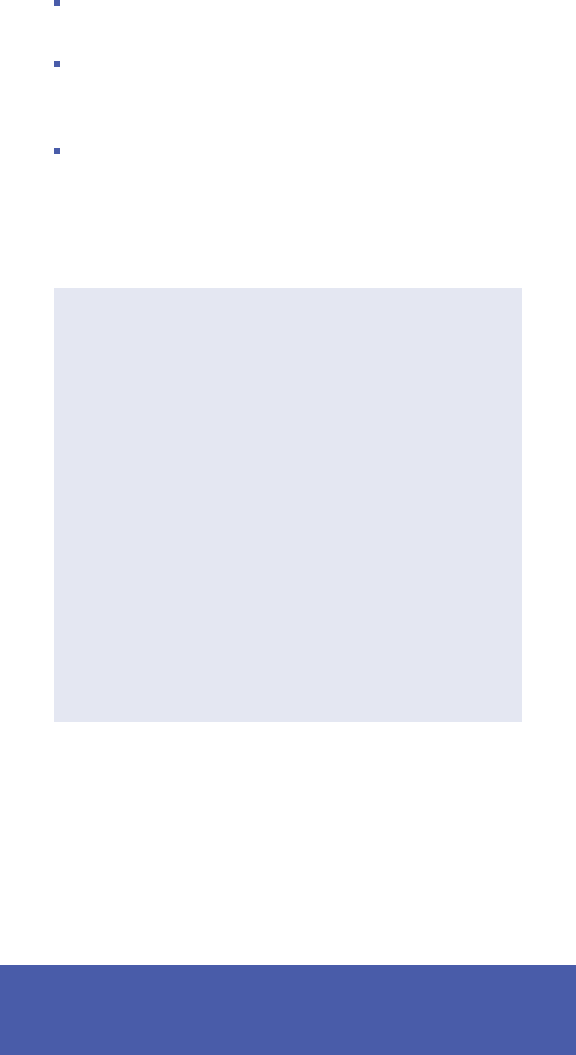
6
CONFIDENTIALITY AND PRIVACY
To understand the limits of appropriate use of social media,
it is important to have an understanding of confidentiality
and privacy in the health care context.
Confidentiality and privacy are related, but distinct concepts:
Any patient information learned by the nurse during the
course of treatment must be safeguarded by that nurse.
Such information may only be disclosed to other members
of the health care team for the purpose of providing care
for the patient.
Confidential information should be shared only with the
patient’s informed consent, when legally required or where
failure to disclose the information could result in significant
harm. Beyond these very limited exceptions, a nurse is
obligated to safeguard confidential information.
As a licensed practical nurse for more than 20 years,
Bob knew the importance of safeguarding a patient’s
privacy and confidentiality. One day, he used his
personal cell phone to take photos of Claire, a
resident in the group home where he worked. Bob
received permission from Claire’s brother to take the
photo since she was unable to give consent due to
her mental and physical condition. That evening,
Bob ran into William, a former employee of the group
home. While catching up, he showed William the
photo of Claire and discussed her condition with him.
The administrator of the group home later learned of
Bob’s actions and terminated his employment for
breach of confidentiality.
Bob thought it was okay for him to take Claire’s photo
because he had the consent of a family member. He also
thought it was acceptable for him to discuss Claire’s condi-
tion because William previously worked with Claire. So why
was this behavior wrong? Because, first, merely asking
Claire’s brother for permission is not obtaining a valid
consent. Second, confidential information should not be
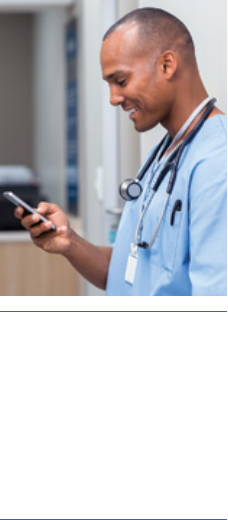
7
disclosed to persons no
longer involved in the care of
a patient. Even though Bob
made an honest mistake,
confidentiality rules must be
strictly enforced to protect a
patient’s right to privacy.
Privacy relates to the
patient’s expectation and
right to be treated with
dignity and respect. Effective
nurse/patient relationships
are built on trust. Patients
need to be confident that
their most personal informa-
tion and their basic dignity
will be protected by the
nurse. Patients will be
hesitant to disclose personal
information if they fear it will
be disseminated beyond those who have a legitimate
“need to know.” Any breach of this trust, even inadvertent,
damages the nurse/patient relationship and the general
trustworthiness of the profession of nursing.
Federal law reinforces and further defines privacy through
the Health Insurance Portability and Accountability Act
(HIPAA). HIPAA regulations are intended to protect patient
privacy and confidentiality by defining individually identifiable
information and establishing how this information may be
used, by whom and under what circumstances. The
definition of individually identifiable information includes
any information that relates to the past, present or future
physical or mental health of an individual, or provides
enough information that leads someone to believe the
information could be used to identify an individual.
Breaches of patient confidentiality or privacy can be
intentional or inadvertent and can occur in a variety of
ways. Nurses may breach confidentiality or privacy with
information they post via social media sites. Examples may
include comments in which patients are described with
enough sufficient detail to be identified, referring to patients
in a degrading or demeaning manner, or posting videos or
photos of patients.
Privacy is the patient’s
expectation to be treated
with dignity and respect.
Condentiality is
safeguarding patient
information.

8
Emily, a 20-year-old nursing student, wasn’t aware
of the potential repercussions that could occur
when she took a photo of Tommy, a 3-year-old
leukemia patient in a pediatric unit, on her personal
cell phone. When Tommy’s mom went to the cafe-
teria, Emily asked him if she could take his picture,
and Tommy immediately said yes. Emily took his
picture as she wheeled him into his room. She
posted Tommy’s photo on her Facebook page with
this caption: “This is my 3-year-old leukemia
patient who is bravely receiving chemotherapy!
He is the reason I am so proud to be a nurse!”
In the photo, Room 324 of the pediatric unit was
visible. Days later, the dean of the nursing program
called Emily into her office. A nurse from the
hospital found the photo Emily posted of Tommy
on Facebook and reported it to hospital officials
who also contacted Emily’s nursing program.
While Emily never intended to breach the patient’s confiden-
tiality, the hospital faced a HIPAA violation. From Emily’s
post, people were able to identify Tommy as a cancer patient
and the hospital where he was receiving treatment. School
officials expelled Emily from the nursing program for
breaching patient confidentiality and HIPAA violations.
The nursing program was also barred from using the pedi-
atric unit for their students. Emily’s innocent, yet
inappropriate, action of posting a patient’s photo had
repercussions for her, the nursing program and the hospital.
But what if Emily removed the photo hours later? If it’s taken
down, no harm, no foul, right? No. Anything that exists on a
server is there forever and could be retrieved later, even after
deletion; therefore, it would still be discoverable in a court
of law. Further, someone could have taken a screenshot
of her Facebook page and posted it on a public website.
Patient information and photos should never be posted on
social media websites. Even after being deleted, the photo
is still on a server and possibly posted somewhere else on
the Internet.

9
POTENTIAL CONSEQUENCES
As we’ve seen with Jamie, Bob and Emily, potential conse-
quences for inappropriate use of social and electronic media
by nurses vary. Consequences depend, in part, on the
particular nature of the nurse’s conduct.
Instances of inappropriate use of social and electronic
media may be reported to the BON. Laws outlining the
basis for disciplinary action by a BON vary between
jurisdictions. Depending on the laws of a jurisdiction, a
BON may investigate reports of inappropriate disclosures
on social media sites by a nurse on the grounds of:
Unprofessional conduct;
Unethical conduct;
Moral turpitude (defined as conduct that is considered
contrary to community standards of justice, honesty or
good morals);
Mismanagement of patient records;
Revealing a privileged communication; and
Breach of confidentiality.
If the allegations are found to be true, the nurse may face
disciplinary action by the BON, including a reprimand or
sanction, assessment of a monetary fine, or temporary or
permanent loss of licensure.
Improper use of social media by nurses may violate state
and federal laws established to protect patient privacy and
confidentiality. Such violations may result in both civil and
criminal penalties, including fines and possible jail time. A
nurse may face personal liability and be individually sued for
defamation, invasion of privacy or harassment. Particularly
flagrant misconduct on social media websites may also
raise liability under state or federal regulations focused on
preventing patient abuse or exploitation.
If the nurse’s conduct violates the policies of the employer,
the nurse may face employment consequences, including
termination. Additionally, the actions of the nurse may
damage the reputation of the health care organization,
or subject the organization to a lawsuit or regulatory
consequences.
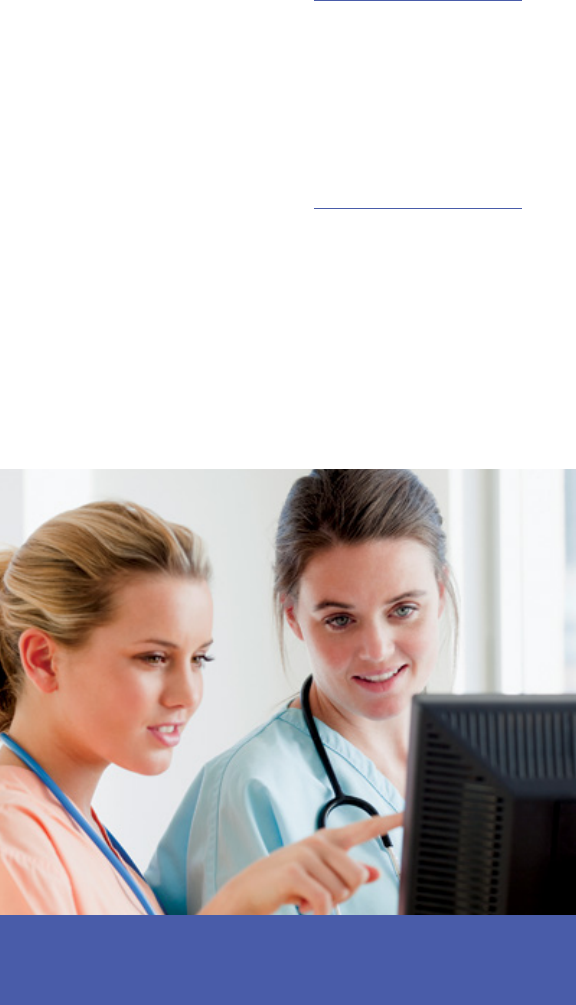
10
SOCIAL MEDIA’S IMPACT ON PATIENT
SAFETY AND CARE
Another concern arising from social media misuse is its
effect on team-based patient care. Online comments by
a nurse regarding co-workers, even if posted from home
during nonwork hours, may constitute lateral violence.
Lateral violence includes disruptive behaviors of intimidation
and bullying, which may be
perpetuated in person or via
the Internet. This is sometimes
referred to as “cyberbullying.”
Such activity is a cause for
concern for current and future
employers, and regulators
because they negatively affect
team-based care, thus creating
patient-safety ramifications.
The line between speech protected by labor laws, the
First Amendment and the ability of an employer to
impose expectations on employees outside of work is still
being determined.
Nonetheless, negative comments can be detrimental to
a cohesive health care delivery team and may result in
sanctions against the nurse.
… negative comments
can be detrimental to
a cohesive health care
delivery team and may
result in sanctions
against the nurse.

11
COMMON MYTHS AND
MISUNDERSTANDINGS OF SOCIAL MEDIA
While instances of intentional or malicious misuse of
social media have occurred, in most cases, inappropriate
disclosure is unintentional. A number of factors may
contribute to a nurse inadvertently violating patient privacy
and confidentiality while using social media, including:
A mistaken belief that the communication or post is private
and accessible only to the intended recipient. The nurse
may fail to recognize that content once posted or sent can
be disseminated to others.
A mistaken belief that content deleted from a site is
no longer accessible. The moment something is posted,
it lives on a server that can always be discoverable in a
court of law.
A mistaken belief that it is harmless if private information
about patients is disclosed if the communication is
accessed only by the intended recipient. This is still a
breach of confidentiality.
A mistaken belief that it is acceptable to discuss or refer
to patients if they are not identified by name, but referred
to by a nickname, room number, diagnosis or condition.
The patient can still be identified so this too is a breach
of confidentiality and demonstrates disrespect for patient
privacy.
Confusion between a patient’s right to disclose personal
information about himself or herself and the need for
health care providers to refrain from disclosing patient
information without a care-related need for the disclosure.
The ease of posting and the commonplace nature of sharing
information via social media may appear to blur the line
between one’s personal and professional lives. The quick,
easy and efficient technology enabling use of social media
reduces not only the time it takes to post, but also the time
to consider whether the post is appropriate and what ramifi-
cations may come from posting inappropriate content.
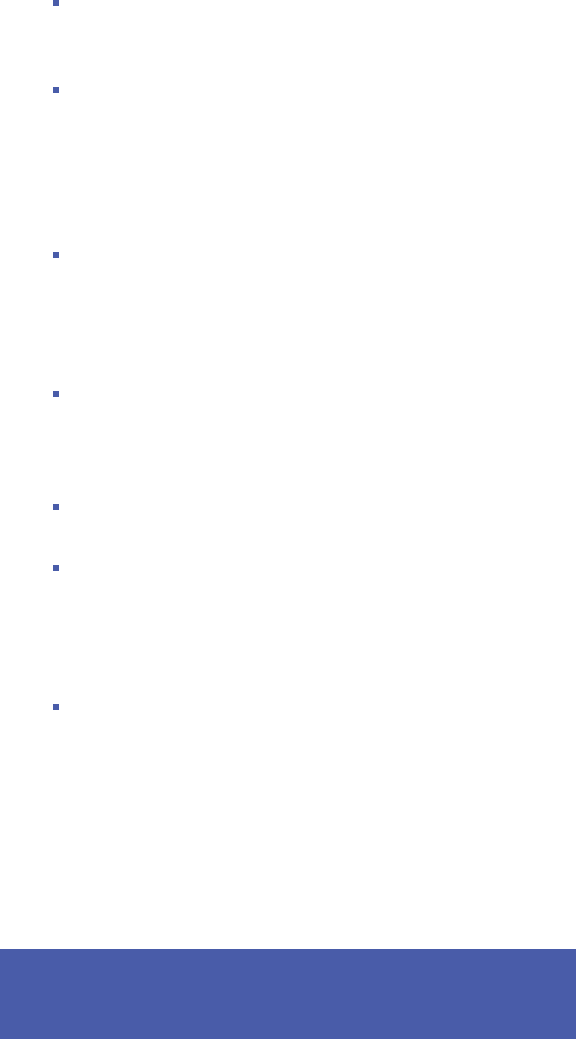
12
HOW TO AVOID DISCLOSING CONFIDENTIAL
PATIENT INFORMATION
With awareness and caution, nurses can avoid inadvertently
disclosing confidential or private information about patients.
The following guidelines are intended to minimize the risks of
using social media:
Nurses must recognize that they have an ethical and legal
obligation to maintain patient privacy and confidentiality at
all times.
Nurses are strictly prohibited from transmitting by way
of any electronic media any patient-related image. In
addition, nurses are restricted from transmitting any
information that may be reasonably anticipated to violate
patient rights to confidentiality or privacy, or otherwise
degrade or embarrass the patient.
Nurses must not share, post or otherwise disseminate
any information or images about a patient or information
gained in the nurse/patient relationship with anyone
unless there is a patient care-related need to disclose
the information or other legal obligations to do so.
Nurses must not identify patients by name, or post or
publish information that may lead to the identification
of a patient. Limiting access to postings through privacy
settings is not sufficient to ensure privacy.
Nurses must not refer to patients in a disparaging manner,
even if the patient is not identified.
Nurses must not take photos or videos of patients on
personal devices, including cell phones. Nurses should
follow employer policies for taking photographs or videos
of patients for treatment or other legitimate purposes using
employer-provided devices.
Nurses must maintain professional boundaries in the use
of electronic media. Like in-person relationships, the nurse
has an obligation to establish, communicate and enforce
professional boundaries with patients in the online
environment. Use caution when having online social
contact with patients or former patients. Online contact
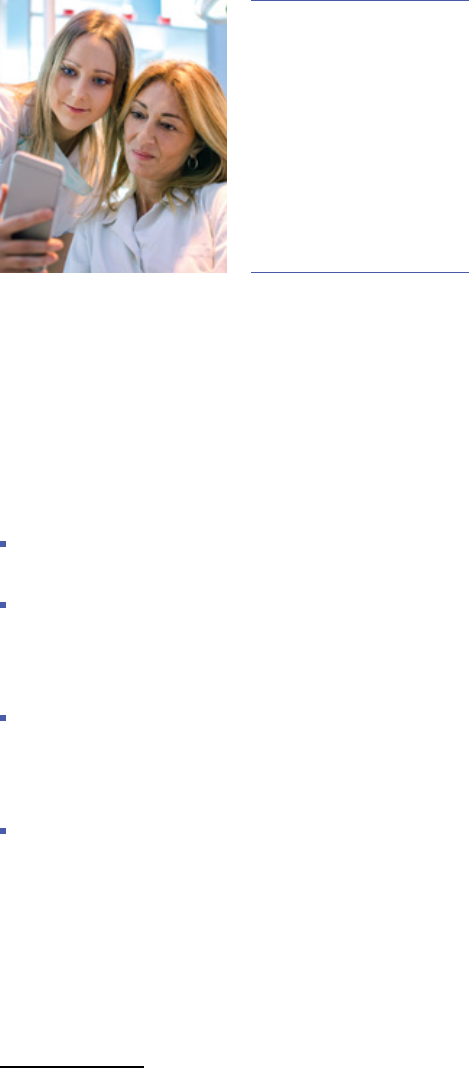
13
with patients or former patients blurs the distinction
between a professional and personal relationship. The fact
that a patient may initiate contact with the nurse does not
permit the nurse to engage in a personal relationship with
the patient.
1
Nurses must consult employer policies or an
appropriate leader within the organization for guidance
regarding work related postings.
Nurses must promptly report any identified breach of
confidentiality or privacy.
Nurses must be aware of and comply with employer
policies regarding use of employer-owned computers,
cameras and other electronic devices, and use of personal
devices in the workplace.
Nurses must not make disparaging remarks about
employers or co-workers. Do not make threatening,
harassing, profane, obscene, sexually explicit, racially
derogatory, homophobic or other offensive comments.
Nurses must not post content or otherwise speak on
behalf of the employer unless authorized to do so, and
must follow all applicable policies of the employer.
1
Nurses may want to consult NCSBN’s “A Nurse’s Guide to Professional
Boundaries” for more information on this issue.
Like in-person
relationships, the nurse
has an obligation to
establish, communicate
and enforce professional
boundaries with
patients in the online
environment.
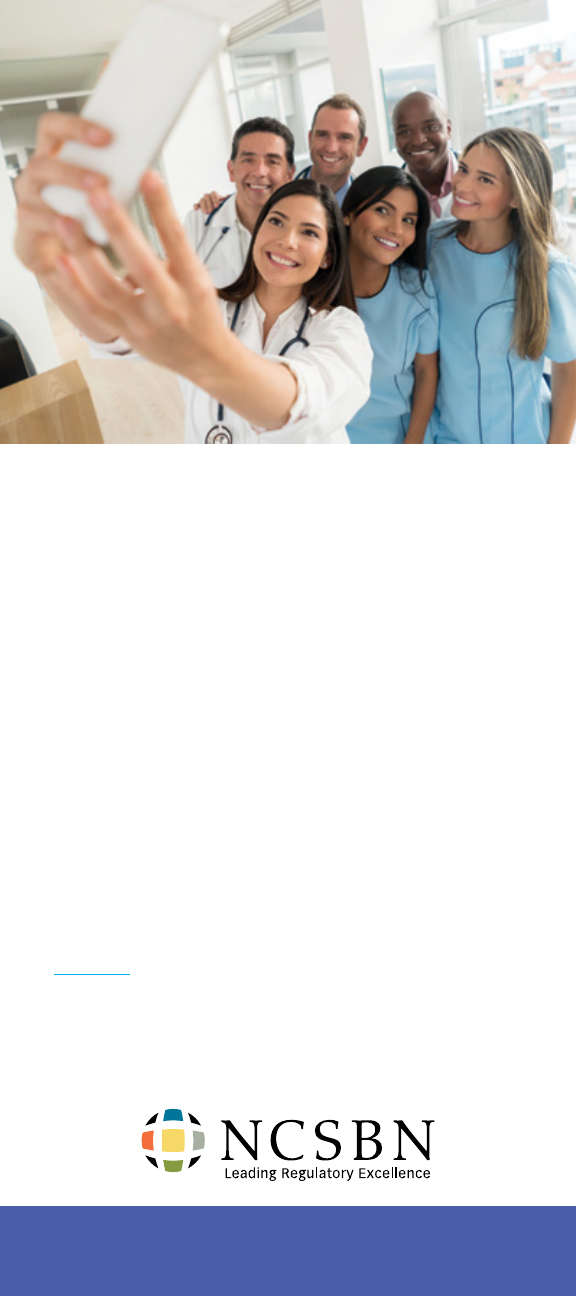
14
CONCLUSION
Social media has tremendous potential for strengthening
personal relationships and providing valuable information
to health care consumers, as well as affording nurses a
valuable opportunity to interface with colleagues from around
the world. Nurses need to be aware of the potential conse-
quences of disclosing patient-related information via social
media, and mindful of employer policies, relevant state and
federal laws, and professional standards regarding patient
privacy and confidentiality and its application to social and
electronic media. By being careful and conscientious, nurses
may enjoy the personal and professional benefits of social
media without violating patient privacy and confidentiality.
NCSBN SOCIAL MEDIA RESOURCES
NCSBN offers additional resources pertaining to social media
including the “Social Media Guidelines for Nurses” video, at
ncsbn.org that highlights guidelines for nurses and nursing
students for using social media responsibly. This video
summarizes key points of these guidelines along with
dramatization of potential scenarios of inappropriate social
media use.

15
THE NURSE’S CHALLENGE
Be aware.
Be cognizant of feelings and behavior.
Be observant of the behavior of other
professionals.
Always act in the best interest of the patient.
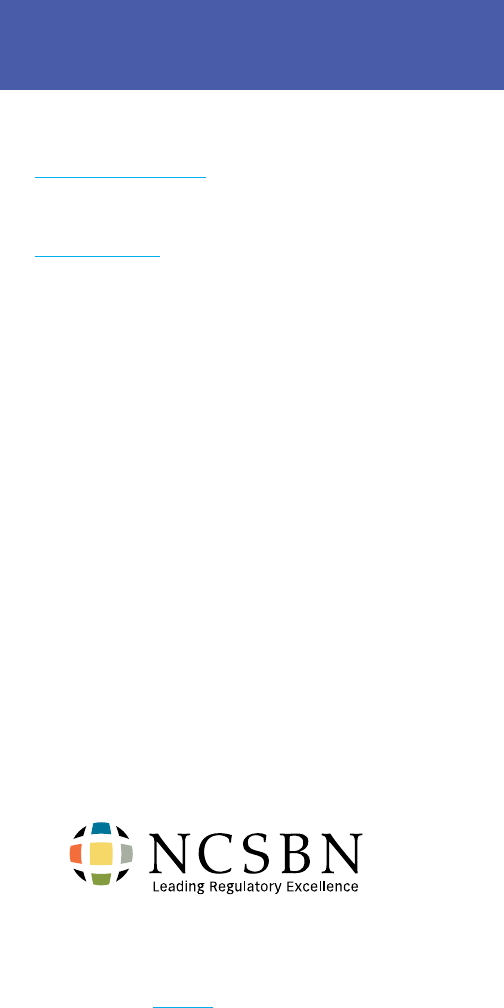
111 E. Wacker Drive, Suite 2900
Chicago, IL 60601-4277
312.525.3600
ncsbn.org
To find the board of nursing in your state/territory,
visit ncsbn.org/contactbon.
To order additional copies of this brochure,
visit ncsbn.org/order.
06/18
Copyright ©2018 National Council of State Boards of Nursing, Inc. (NCSBN
®
)
All rights reserved. This document may not be used, reproduced or
disseminated to any third party without written permission from NCSBN.
